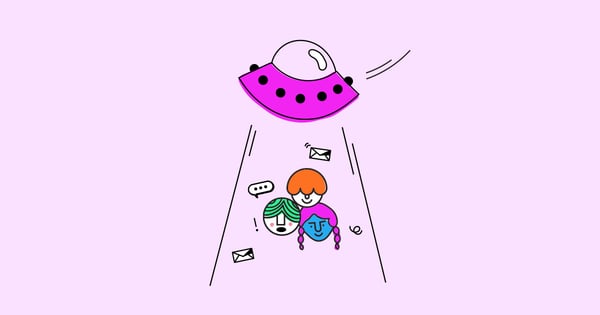Imagine two brands.
Brand A is one of your favs. You’ve bought from them before, you love their products, you subscribe to their email newsletters, and you get a tingle of anticipation each time you place an order.
Then there’s Brand B, who you’ve never even heard of. They sell the same type of stuff as Brand A at a similar price point, but you’ve got no idea about their product quality, customer support, or anything else.
If I asked you which of the two you’re most likely to buy from next, I’d bet my house you’ll say Brand A.
Rationally, ecommerce marketers know it’s easier to sell to existing customers than new ones. Yet many brands are obsessed with new customers, with one survey revealing that:
- Only 20 percent of ecommerce professionals have a dedicated budget for customer retention
- 63 percent allocate more budget to acquisition than retention
It’s time to change that.
In this article, I’ll talk through everything you need to know about ecommerce customer retention, from understanding its value to calculating retention rates. And I’ll even share a retention strategy example or two (actually, 10).
Table of Contents:
What Is Customer Retention?
Customer retention is the process of encouraging previous customers to continue to make purchases from your company. They stick with you and don’t switch to another brand.
Churn, aka when they leave your brand, may happen for a number of reasons. They may have a poor customer service experience, for example.
Customer retention differs from customer acquisition. The latter means getting customers that have never bought from you before to make their first purchases. Customer retention is, therefore, a later stage in the customer journey.
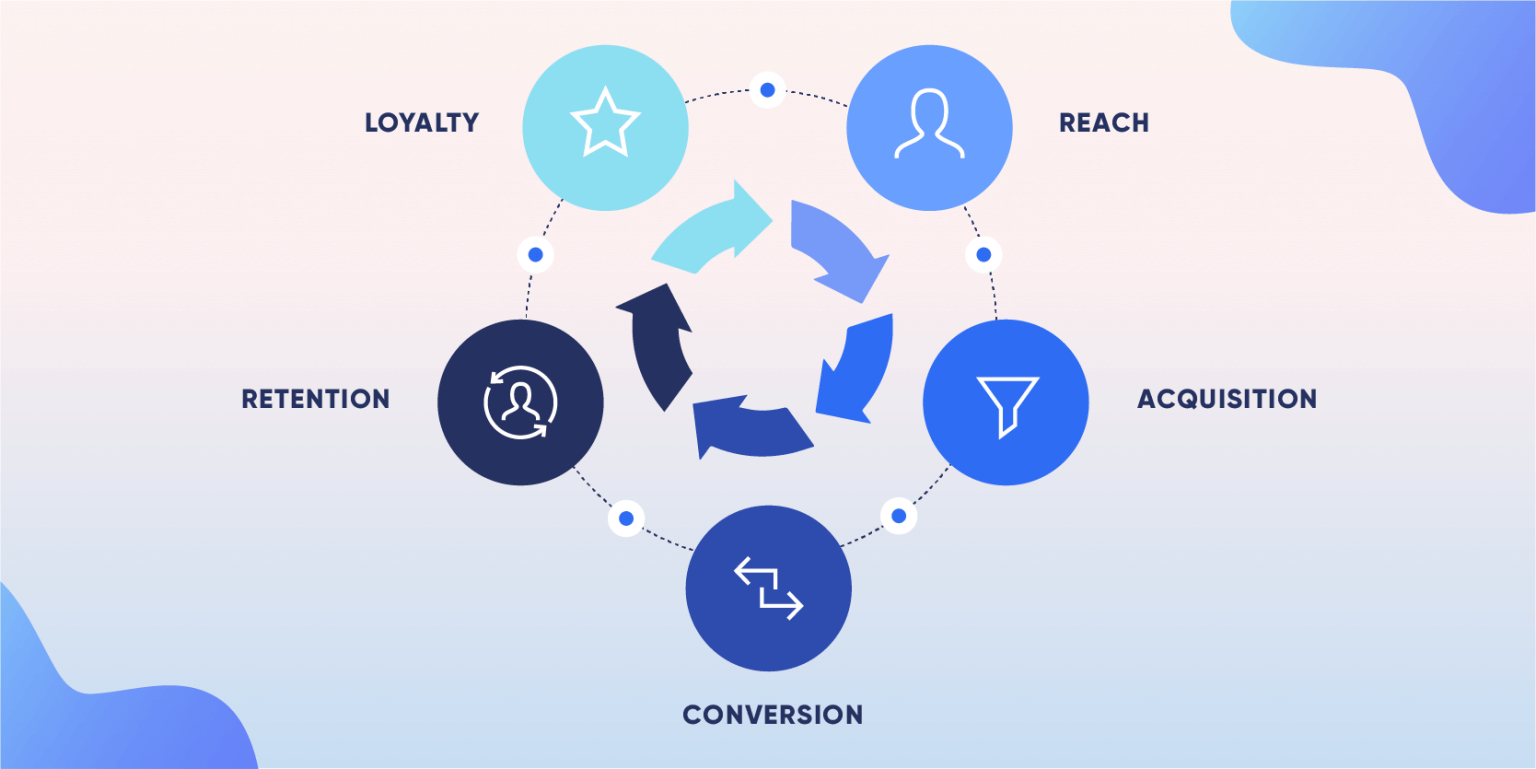
At its core, customer retention is about keeping customers engaged, creating a positive experience, and turning potential one-time buyers into loyal, long-term customers.
Why Focus on Customer Retention?
Customer retention has a better return on investment than acquisition. It’s cheaper and easier to retain customers than acquire new ones. In fact, it’s estimated that the cost of acquiring a customer is five to ten times greater than retaining one.
What’s more, retention results in greater customer lifetime value (CLV). Returning customers not only spend more on average, but they also purchase more often. Fifty-two percent of customers say they’ll go out of their way to buy from their favorite brands.
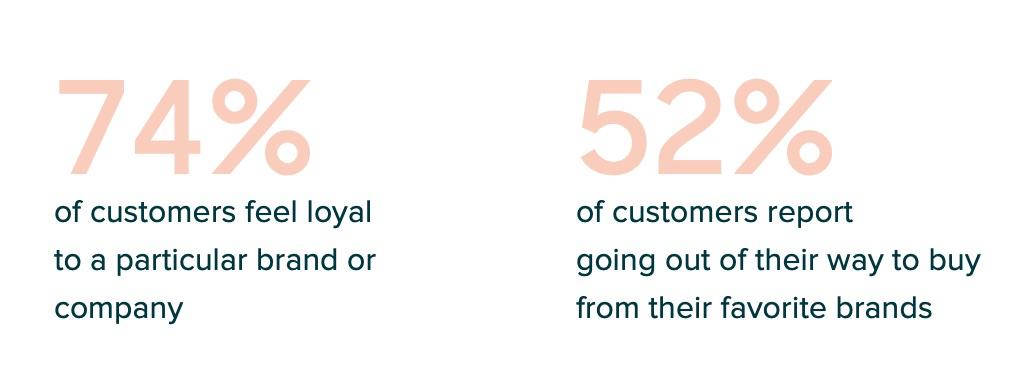
Finally, loyal customers tend to recommend brands they like to their friends and families. This is another way in which retention works out cheaper than acquisition. You acquire customers at no added cost through referrals.
How to Calculate Customer Retention Rate
Calculate your ecommerce retention rate using this formula:
Customer retention rate =
[(Number of customers at the end of time period -
Number of customers acquired during time period)
/ Number of customers at the beginning of time period]
x 100
In other words, to calculate your retention rate for the previous quarter, you need three pieces of information:
- The total number of customers at the start of the quarter
- The total number of customers at the end of the quarter
- The number of new customers acquired through the quarter
Say you had 10,000 customers at the beginning of the quarter and 8,000 at the end. Along the way, you acquired 5,000 new customers. That leaves you with the following calculation:
[(8,000 - 5,000) / 10,000] x 100 = 30 percent retention rate
How does that stack up against the competition?
Well, according to Omniconvert, among ecommerce professionals who know their retention rate, a majority cited a rate of 16 – 30 percent. But that’s a pretty broad range. And it’s worth noting that comfortably the most popular response, with 31 percent of votes, was “Don’t know.”
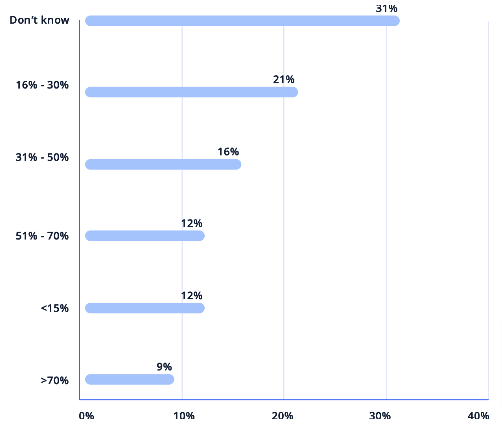
So it’s hard to get a fix on other brand’s retention rates. But you can definitely bring some much-needed context to your own retention rate by considering it alongside other ecommerce metrics, such as:
- Customer lifetime value
- Customer churn rate
- Repeat purchase rate
Here’s how to get those numbers…
How to Calculate Customer Lifetime Value
Customer lifetime value (CLV) describes the total revenue you earn from a single customer throughout their relationship with your brand. Calculate it using this formula:
CLV = (Customer value x Average customer lifespan)
I know what you’re thinking: “But I don’t know my customer value, or my average customer lifespan. Help!”
To get those numbers, you need to run a couple more calculations:
- Average purchase value = Total revenue within a time period / Number of orders within that period
- Average purchase frequency rate = Number of purchases within your chosen time period / Number of total customers in that period
- Customer value = Average purchase value x Average purchase frequency
- Average Customer Lifespan = Sum of all customer lifespans / Total number of customers
Now go back and plug those numbers into the CLV formula above. Generally speaking, the higher your lifetime value, the more repeat orders you’re generating—and the better you are at retention.
How to Calculate Customer Churn
Customer churn is the yin to customer retention’s yang, because it speaks to the number of customers you’ve lost over a given period rather than those you’ve retained. Calculating your churn rate varies based on your ecommerce business model:
Subscription-Based Businesses
It’s simple for subscription-based ecommerce businesses to calculate the churn, because it’s obvious when a customer has ended their relationship with you: they canceled their subscription.
The formula looks like this:
Subscription churn rate =
[(Customers at the start of the period -
Customers at the end of the period) +
New Customers Acquired in the Period] /
Customers at the start of the period
“Regular” Ecommerce Businesses
Things get a little more hazy in the “regular” (i.e. non-subscription) ecommerce world, because there’s no way to categorically state that a given customer has churned.
They might place regular orders month after month, drop off the radar completely, then crop up again a year down the line.
Still, just because there are a few vagaries around “regular” ecommerce churn, that doesn’t mean you can’t calculate it with a decent degree of certainty. It just requires a couple initial steps:
- Calculate your average timeline for repeat purchases. How long is the average gap between a customer’s orders? You can find this by looking at your repeat purchase data and working out the number of days between each repeat purchase.
- Group customers into cohorts/segments. Build customer cohorts based on the date of customers’ first purchases. For instance, you might build a cohort of all customers who placed their first order in March 2023.
Now, you can come up with (a decent approximation of) your customer churn rate by:
- Calculating your average repeat purchase timeline and double it. So if your average repeat purchase timeline is one month, look at the two-month timeframe.
- Tally up the total number of customers in your cohort. So let’s say 2000 customers.
- Add up the amount of customers in your cohort/segment who ordered again (became repeat purchasers) during that two-month period. Let’s say it was 500 customers.
- Subtracting them from the total number of your segment. This leaves you with 1500 customers.
- Diving the customers who didn’t repurchase (1500) by the total number of customers you started with (2000), and then multiply it by 100.
So the formula for calculating churn rate is this:
[Timeframe x 2]
((Total number of customers -
Number of Repeat Purchasers)
/Total number of customers ))
x 100
That looks complicated. Let’s plug in some numbers.
[(2,000 - 500) / 2,000] x 100 = 75 percent
You can get more sophisticated results by analyzing and comparing different types of customer cohorts, such as:
- Email subscribers vs non-subscribers
- High spenders vs low spenders
- “Legacy” customers vs new customers
How to Calculate Repeat Purchase Rate
Repeat purchase rate is a similar metric to customer retention rate, because it represents the proportion of your total customer base who are loyal repeat buyers.
Unlike churn rate, it’s comparatively easy for any ecommerce business to calculate their repeat purchase rate using this formula:
(Number of customers with 2 or more purchases in a given period /
Total number of customers during that period)
x 100
For instance, if you had 100,000 total customers in 2022 and 30,000 placed two or more orders, your repeat purchase rate would be:
(30,000 / 100,000) x 100 = 30 percent
According to Metrilo, the average ecommerce repeat purchase rate stands at 28.2 percent, although numbers vary significantly across different niches:
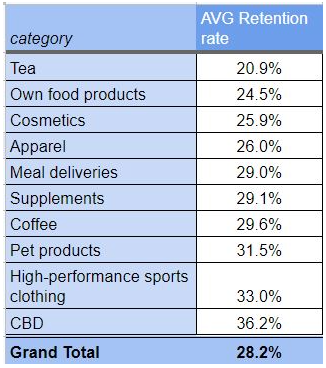 This isn’t surprising. If you sell high-ticket, long-lasting products (like TV sets), only a small proportion of customers will make multiple purchases within a short time period.
This isn’t surprising. If you sell high-ticket, long-lasting products (like TV sets), only a small proportion of customers will make multiple purchases within a short time period.
Still, for any ecommerce business, regardless of niche, a high repeat purchase rate will always be a good thing.
Customer Retention vs Acquisition
Obviously, every ecommerce business wants to expand its audience and bring in new customers.
But it’s becoming increasingly difficult to maintain an aggressive customer acquisition strategy. Between 2009 and 2022, average acquisition costs surged by 222 percent — from $9 – $29 for every new customer acquired — through a combination of factors, including:
- The phasing-out of third-party cookies
- The launch of iOS 14.5, requiring users to grant permission for apps to collect and share data
- Increased legislation around consumer privacy, such as GDPR and CCPA
All of which means it’s more important than ever for ecommerce marketers to take a customer-first approach to acquisition, based around building sustainable, long-lasting customer relationships.
The 10 Best Ecommerce Customer Retention Strategies
Customer acquisition and retention strategies don’t need to be mutually exclusive. Because what encourages customers to buy from you in the first place can also persuade them to keep coming back for more.
With that in mind, let’s take a look at 10 ecommerce customer retention strategies to help you drive repeat purchases and grow your customer lifetime value…
1. Analyze Why Customers Drop Off
When customers stop buying from you, you don’t just have to cut your losses. Figure out where in the customer journey previous customers tend to drop off, and you can remedy any issues.
It gives you the opportunity to win customers back and prevent future customers from leaving your brand before they even get to that point.
One way to work out where issues in the customer journey lie is to keep track of important metrics. Ecommerce customer retention metrics include:
- Customer lifetime value
- Customer retention rate
- Churn rate
- Refund and return rate
- Repeat customer rate
- Subscription rate
With useful data and customer insights, you can make further investigations and come up with the right solutions to customer issues.
For instance, if you have a high refund and return rate, you must figure out if there’s an issue with the product itself or perhaps whether the product doesn’t match its description on your website.
You may wish to calculate important metrics using analytics tools or formulas. Alternatively, go straight to the horse’s mouth to discover why customers drop off. In other words, gather and analyze customer feedback.
For instance, you may survey customers that haven’t purchased from you in a while. Here’s an example from lifestyle brand Fabeltics Men:
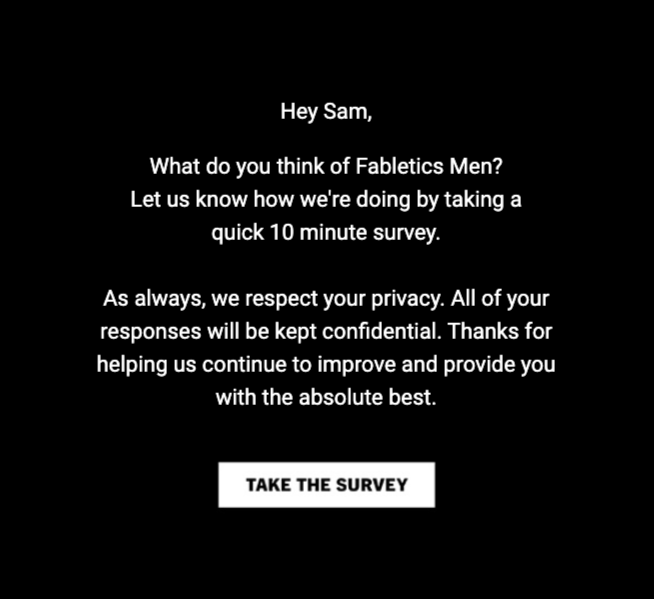
The company uses a quick and simple survey to ask previous renters why they haven’t returned to the service.
2. Leverage Post-Purchase Emails
Use a post-purchase email sequence to encourage retention from the get-go. Post-purchase emails establish trust and create a positive customer experience that encourages previous buyers to return.
One important thing to remember here is that post-purchase emails tend to have a higher open rate than your average newsletter, email blast, etc. Customers are keen to find out information on the status of their order.
This means that post-purchase emails provide the perfect opportunity to boost the likelihood of customer retention while you have the customer’s attention.
For example, The North Face uses order confirmation emails to get customers to sign up for its SMS list:
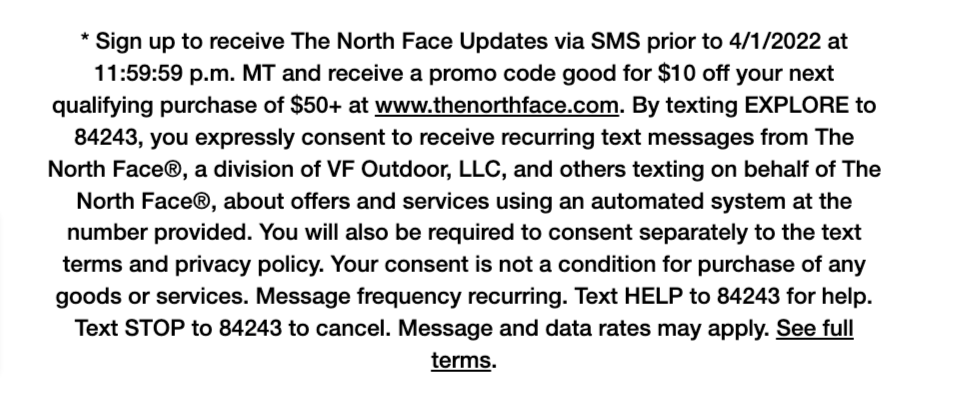
Naturally, The North Face can use this information to maintain communication with previous customers and send out relevant offers to encourage future purchases.
If you’re looking to get in on the action, I recommend a sequence of five main post-purchase emails. These are:
- Order confirmation
- Shipping confirmation
- Shipping status update
- Review request
- Offer or discount to return
The last type of email prompts the customer to make a second purchase from your brand. This helps to make your product(s) a staple need for the customer.
Here’s an example from Brooklinen:
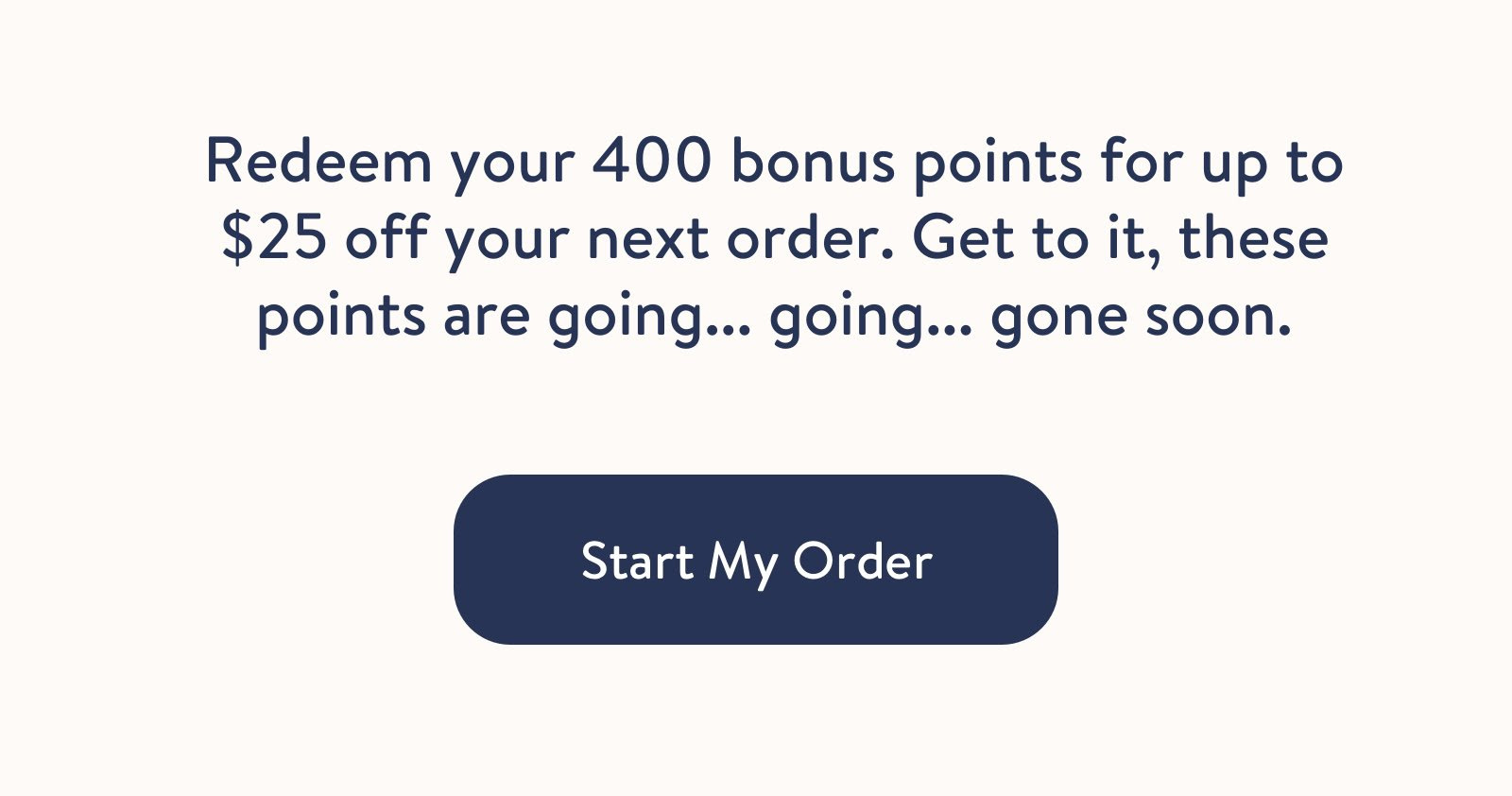 As you can see, the company first offers customers an incentive in the form of points off their next purchase. Then it goes on to recommend products that complement the previous purchase.
As you can see, the company first offers customers an incentive in the form of points off their next purchase. Then it goes on to recommend products that complement the previous purchase.
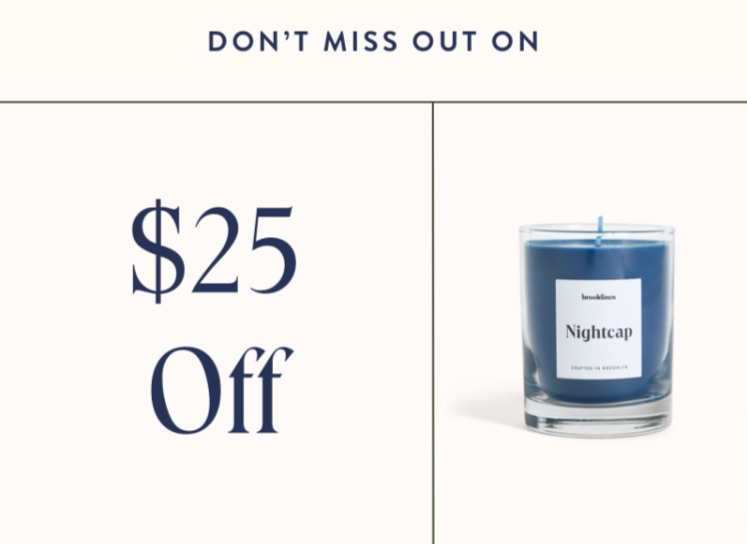 The company is subtly saying, use your discount against these items. Pretty smart, huh?
The company is subtly saying, use your discount against these items. Pretty smart, huh?
3. Work on Delighting Your Customers
It’s not enough to merely satisfy customers — you need to delight them.
According to a study published by the Association for Consumer Research, happy customers are willing to spend more on the brands they love. But the relationship between satisfaction and spending isn’t linear.
Rather, it looks kind of like an S-shape that’s concave for low satisfaction levels, convex for high satisfaction levels, and flat for medium levels of satisfaction:
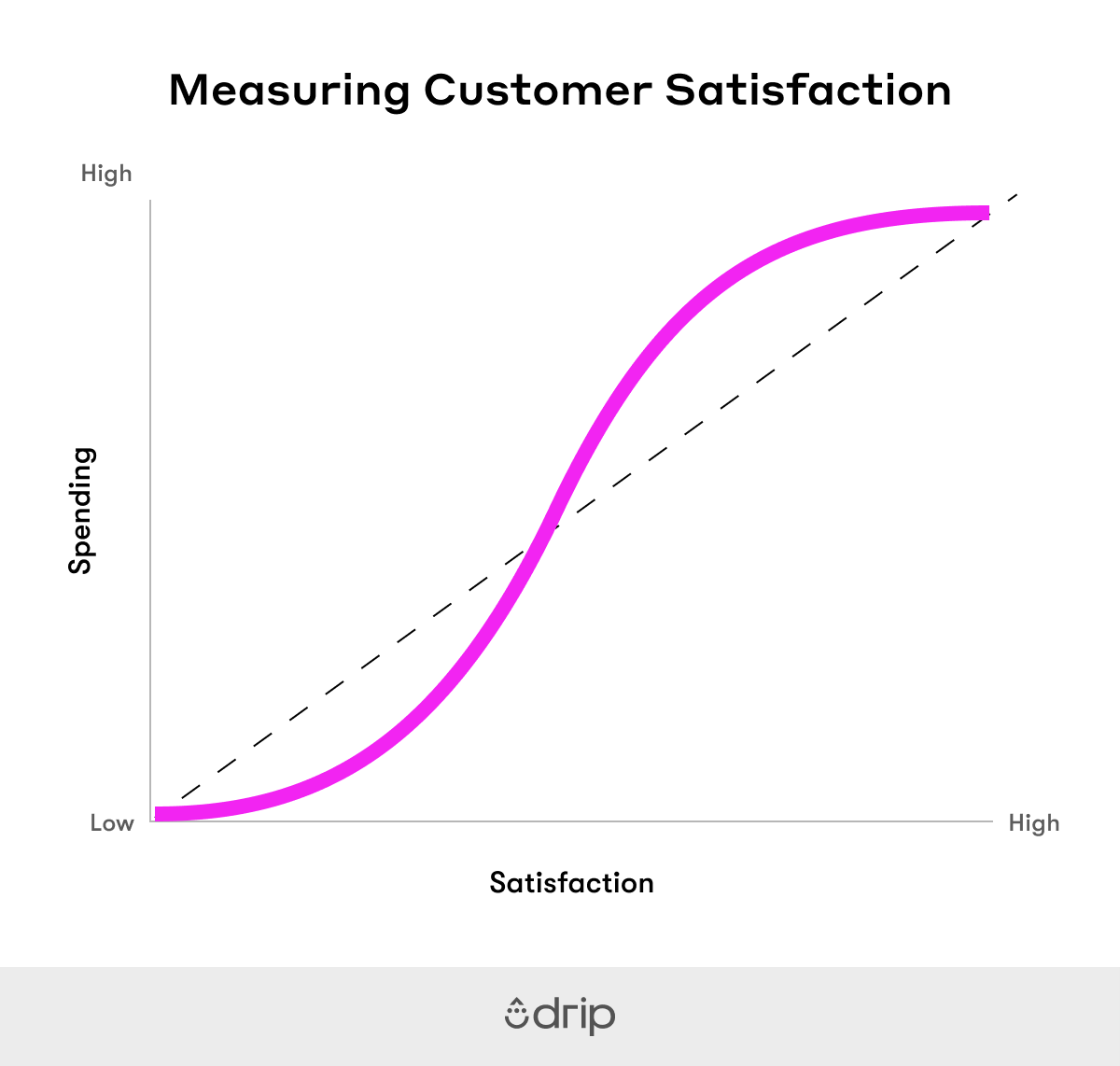 As the researchers put it: “This means that only highly satisfied customers are willing to pay more and very dissatisfied customers are definitely not willing. Moderate levels of satisfaction do not increase a customer’s willingness to pay substantially.”
As the researchers put it: “This means that only highly satisfied customers are willing to pay more and very dissatisfied customers are definitely not willing. Moderate levels of satisfaction do not increase a customer’s willingness to pay substantially.”
So delighting your customers won’t just help you retain them — it offers a bunch of potential revenue-related benefits, such as higher:
- Average order values
- Customer lifetime values
- Repeat purchase rates
One of the best ways to delight loyal customers is to offer a VIP program that rewards customers for making purchases with your brand, creating a reciprocal relationship that has high value for both sides.
To do it well, you first need to make sure your VIP program has an air of exclusivity. Take this example from Savage X Fenty’s Xtra VIP Club:
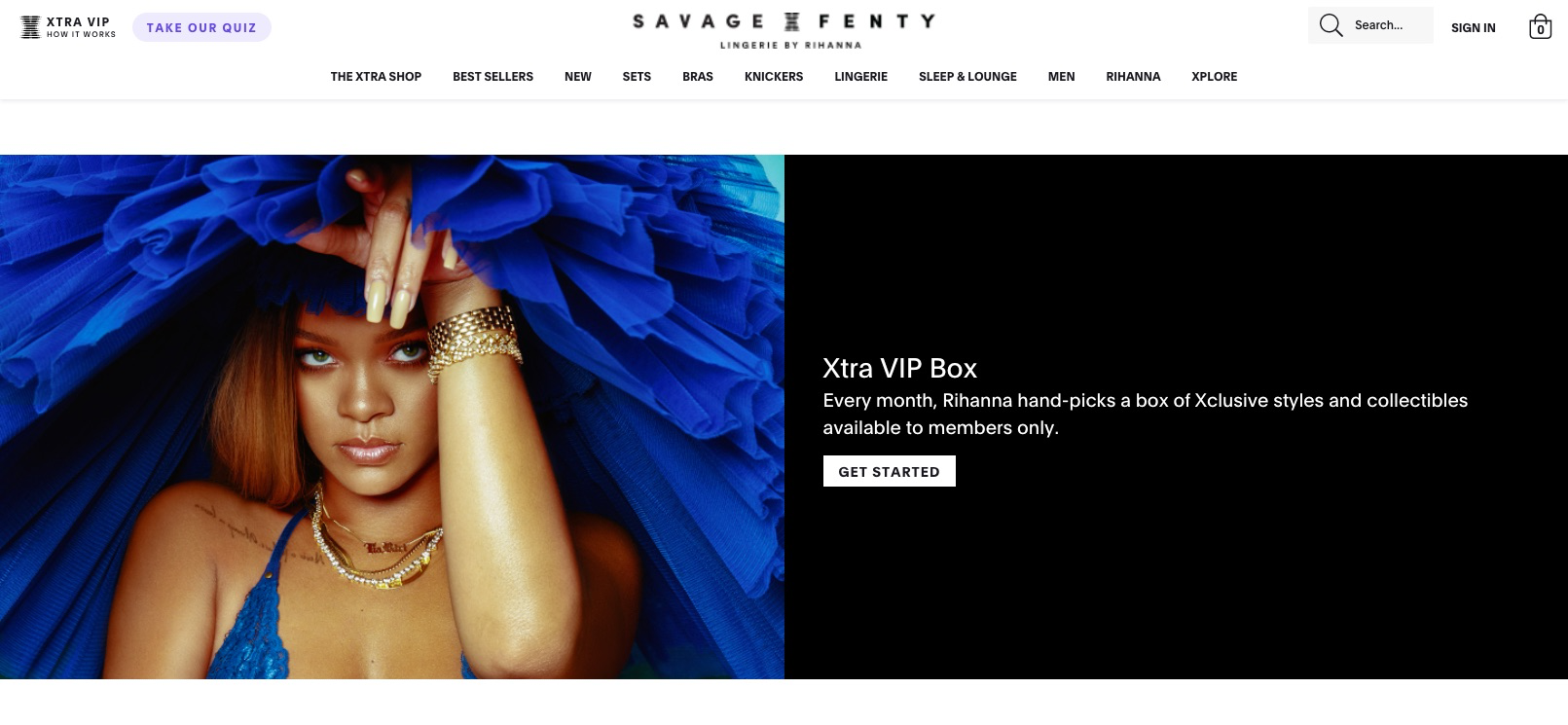
Only VIPs get access to items hand-picked by the queen herself, Rihanna. Now, if that isn’t enticing, I don’t know what is.
Also, you want to make sure your rewards are something your customers actually want. Certain gifted products, for example, will appeal to some but not others.
A way around this issue is to offer a points-based reward system where customers get to choose the rewards for themselves, as in this example from Cotton:On:
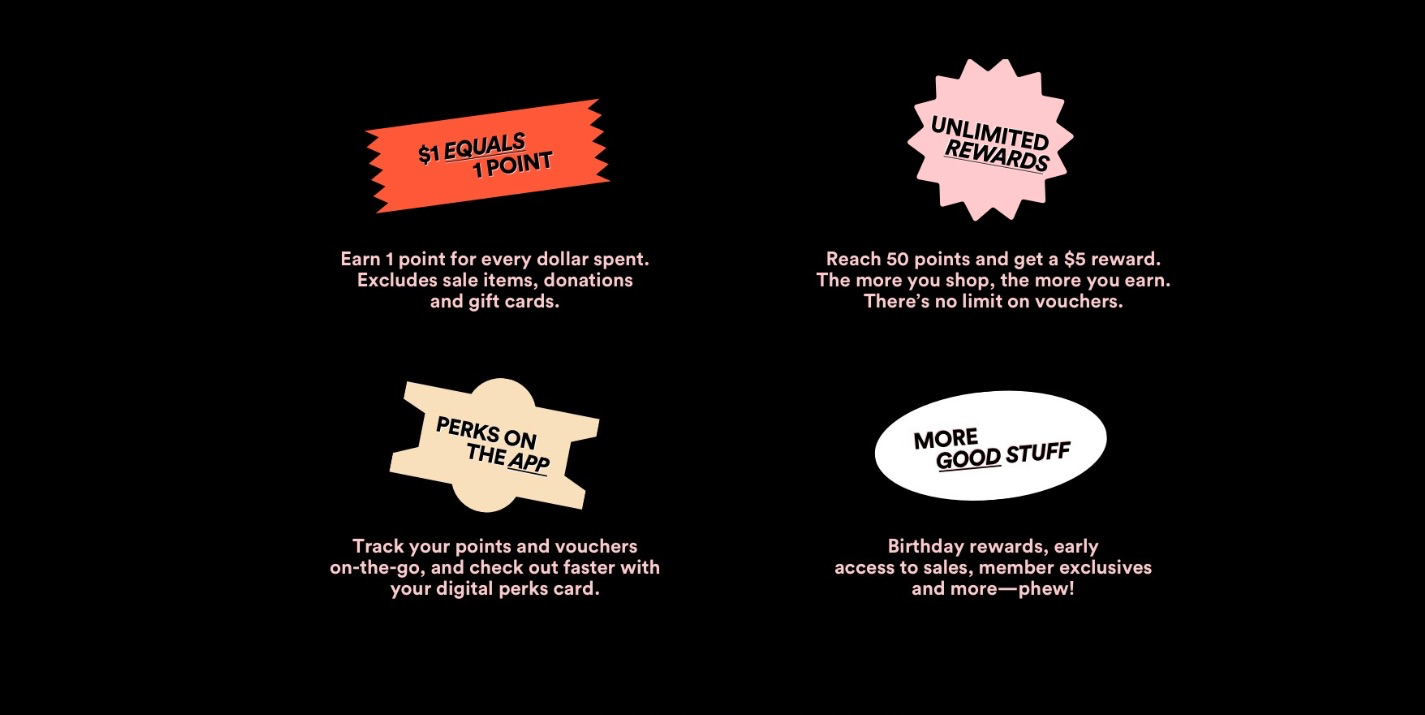
One dollar equals 1 point, and customers can redeem those points against any item they want.
The idea is to create a relationship with customers via a highly appealing, personalized experience. Then you’ll get them to keep coming back to your brand for more.
4. Offer Ongoing Customer Support
Make sure customers have a great experience with your product across the entire journey.
If the quality of your product isn’t up to scratch, they won’t buy from you again. Nor will they make a repeat purchase if they have a sub-par customer service interaction, and so on.
The good news is you can still win unsatisfied customers back if something goes wrong. Do this by offering fast and helpful customer support. You can even have a contact form pop up automatically when users browse your help pages, which might look something like this:
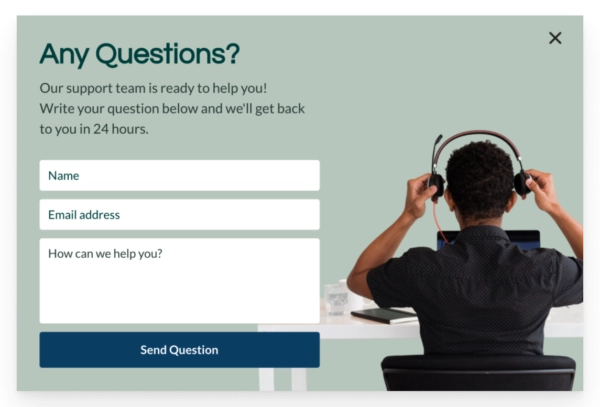 These little touches make a big difference to the customer experience.
These little touches make a big difference to the customer experience.
It’s also a good idea to offer support before the customer even realizes they need it. This ensures they won’t run into any roadblocks that prevent them from buying from you in the future.
You can do this by sending out relevant, helpful content at important points in the customer journey.
The White Company, for instance, sends out a quick and easy setup guide via email when people buy their air purifiers for the first time:
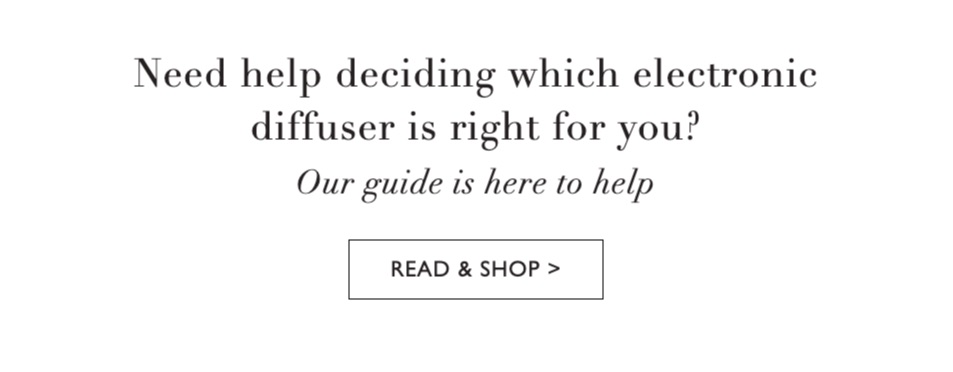 The point is you want people to start using your product, not just forget about it. But not only that, you want them to make the best use of your product they possibly can. This also means it becomes a part of their daily life, and they’re more likely to come back for more.
The point is you want people to start using your product, not just forget about it. But not only that, you want them to make the best use of your product they possibly can. This also means it becomes a part of their daily life, and they’re more likely to come back for more.
Any business can do something like this. Let’s say, for instance, you sell artisan olive oils. It would be a good idea to continue to send out recipes that make use of your oils.
5. Re-Engage Previous Customers with a Product Update
Though winning back customers is possible, that doesn’t mean it’s easy. Most consumers are familiar with the comical win-back emails companies send out these days. You know, the weird, pseudo-romantic ones. *Cringe*
Customers are used to that old trick by now, so it’s not enough for them to give your brand a second chance. What do you do?
Prove to customers that you’ve improved on your product and/or service. You’ve listened to customer feedback and have actually done something about it. This is where product update emails come in.
Here’s an example from Outdoor Voices:
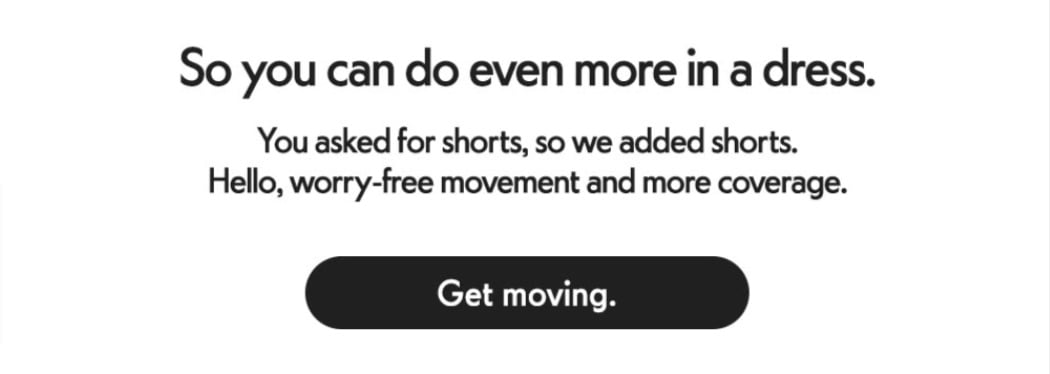 Outdoor Voices explains how the company has added the products that customers asked for.
Outdoor Voices explains how the company has added the products that customers asked for.
This is a perfect example of how you can prove to customers that you’ve added what was missing from your product. You can send an email like this and invite customers to get back on board if they wish.
It’s also a good idea to send product update emails when you add to your product line or offering. If somebody has purchased from you previously and likes your brand, they’ll be likely to come back and purchase from a new category.
For instance, MeUndies is well-known for its underwear but sent out this email when they started offering robes and slippers, too:
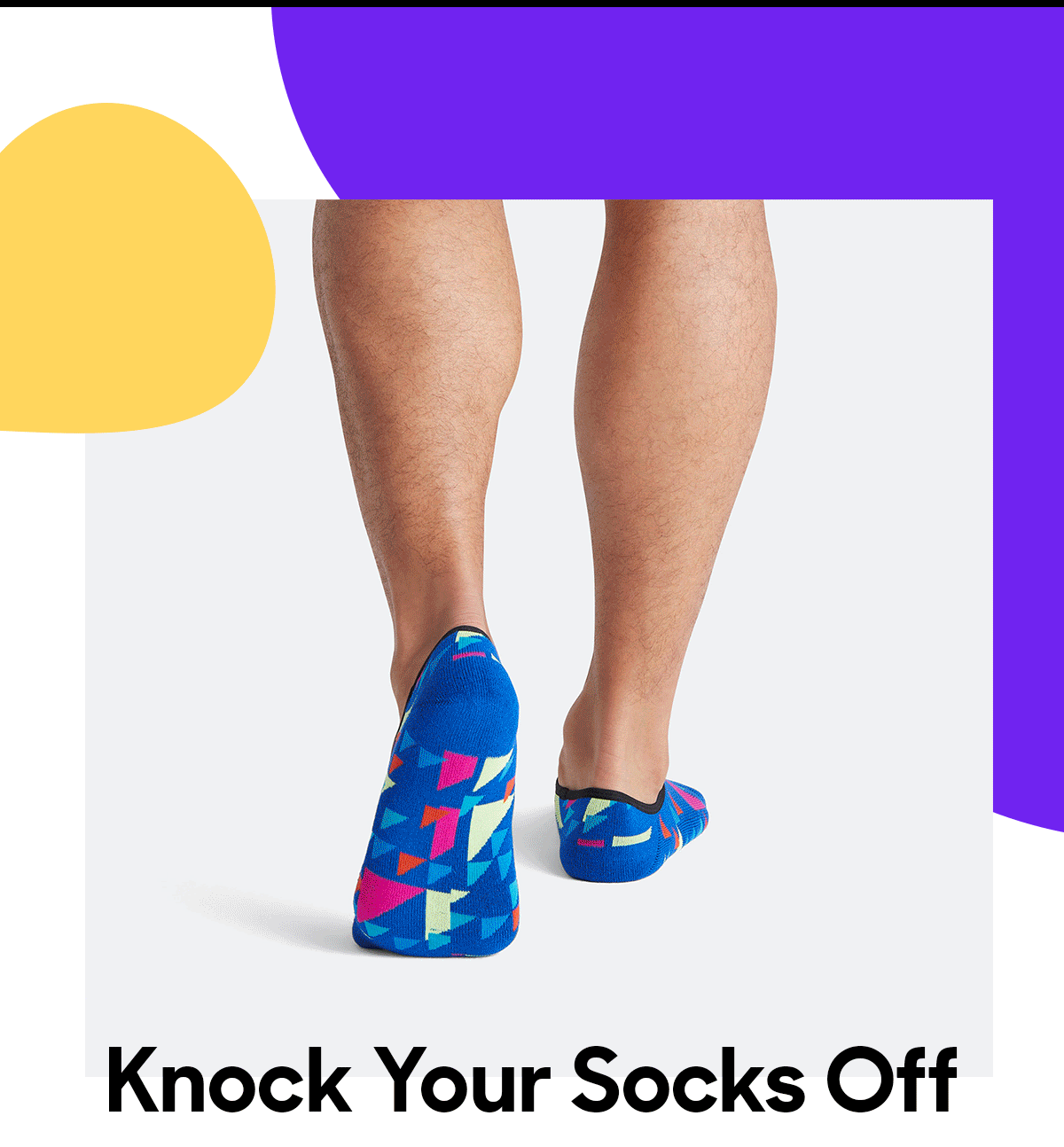 You can do something similar to encourage repeat purchases from your store.
You can do something similar to encourage repeat purchases from your store.
6. Offer a Personalized Shopping Experience
If you want to retain customers, you have to offer them a personalized experience. It’s standard these days, and customers love it.
Forty-four percent of consumers say they’re likely to become repeat buyers after a personalized shopping experience.
But remember, personalization goes beyond including a customer’s name in an email. Anybody can do that. Ecommerce stores are coming up with super innovative ways to personalize the shopping experience.
Some fashion and cosmetic brands, for instance, are now offering virtual try-ons. Clothing brand Farfetchpartnered with Snapchat to do this for its customers.
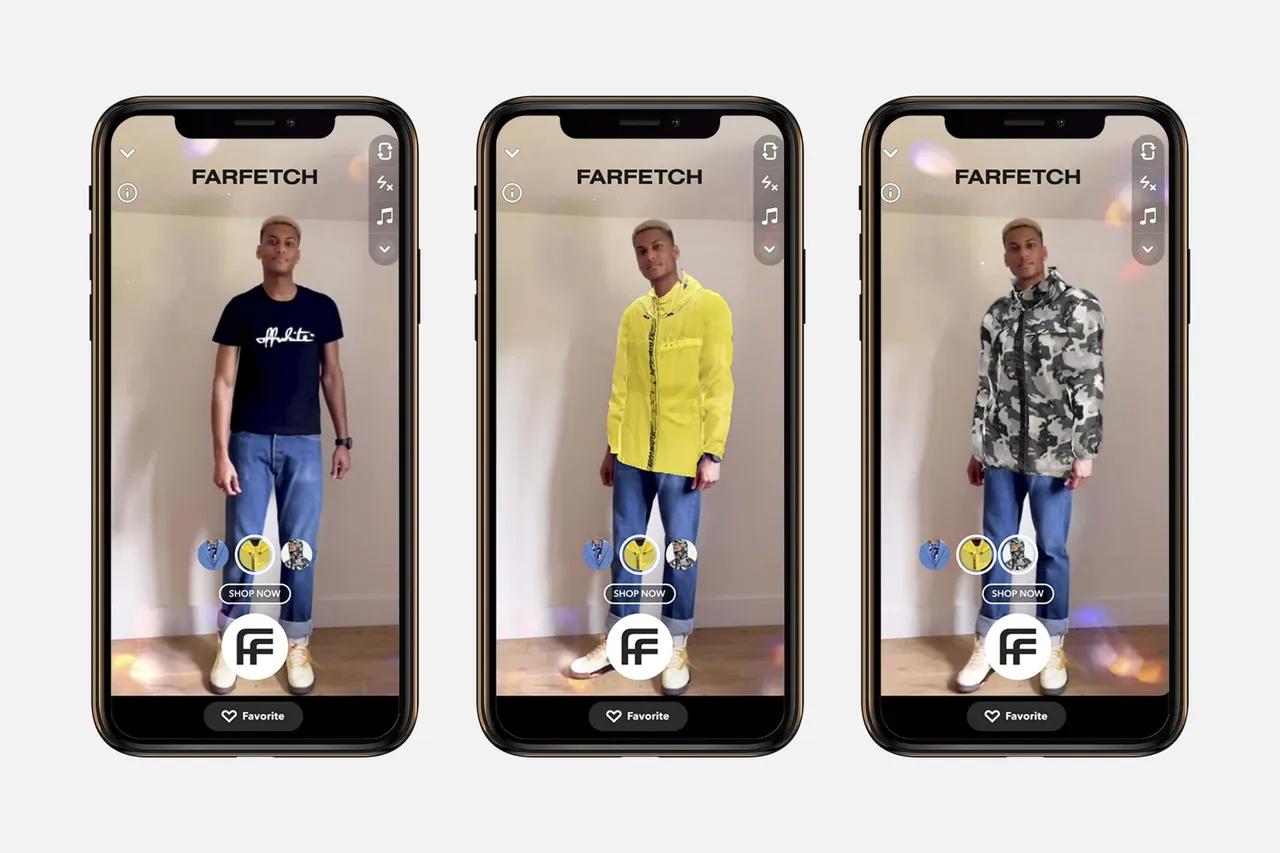 Customers stand in front of their phone cameras and say something like, “Show me a blue t-shirt.” The advanced tech then maps it onto their bodies in a realistic manner.
Customers stand in front of their phone cameras and say something like, “Show me a blue t-shirt.” The advanced tech then maps it onto their bodies in a realistic manner.
But, in terms of personalization, you have to do what makes sense for your customers. Maybe they’re not Snapchat users, as in the above example. You know your audience best (or you should at least), and you know what matters to them.
7. Become a Part of the Customer’s Lifestyle
Have you ever heard of the term “sticky product”? No, we’re not talking about when your kid grabs the smart speaker with their jam-covered hands.
Rather, it’s about making a product so ingrained in somebody’s lifestyle that they have to keep coming back for more. We usually talk about it in the tech world, but the sentiment applies across the board.
One way to make your products sticky is to make customers feel like they’re part of a community. This often boils down to them being part of some kind of greater mission.
The clothes at passionfruit, for instance, are designed and created by members of the LGBTQ+ community for members of the community and allies.
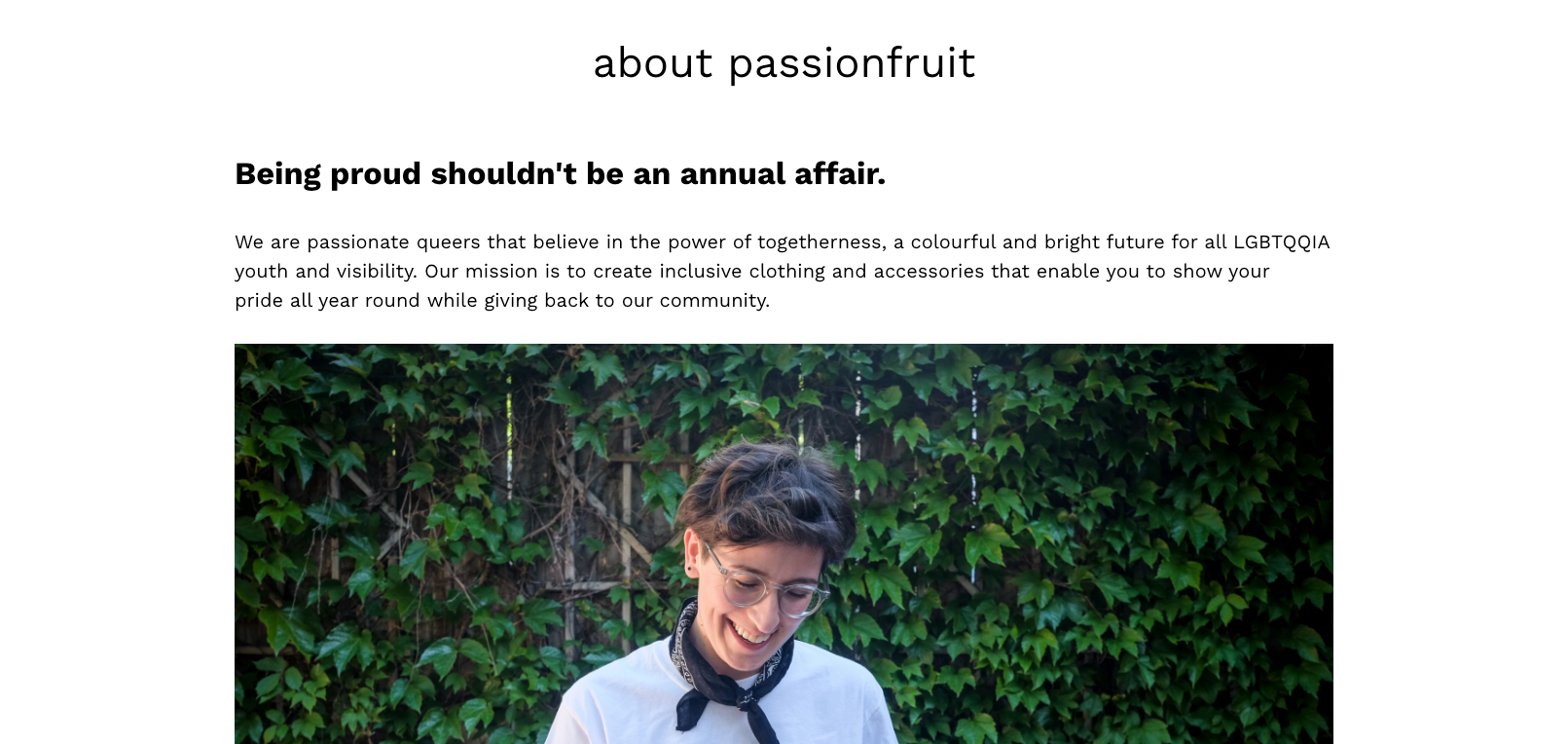 People that consider this important will continue to buy from this brand regardless if they can find a similar hat elsewhere that’s cheaper. Why? Because they want to be a part of this mission.
People that consider this important will continue to buy from this brand regardless if they can find a similar hat elsewhere that’s cheaper. Why? Because they want to be a part of this mission.
Another way to make your product sticky is to offer people something they can’t find elsewhere. For instance, it may be a unique design or a totally innovative product.
Spacestor, for example, offers signature, modular office furniture.
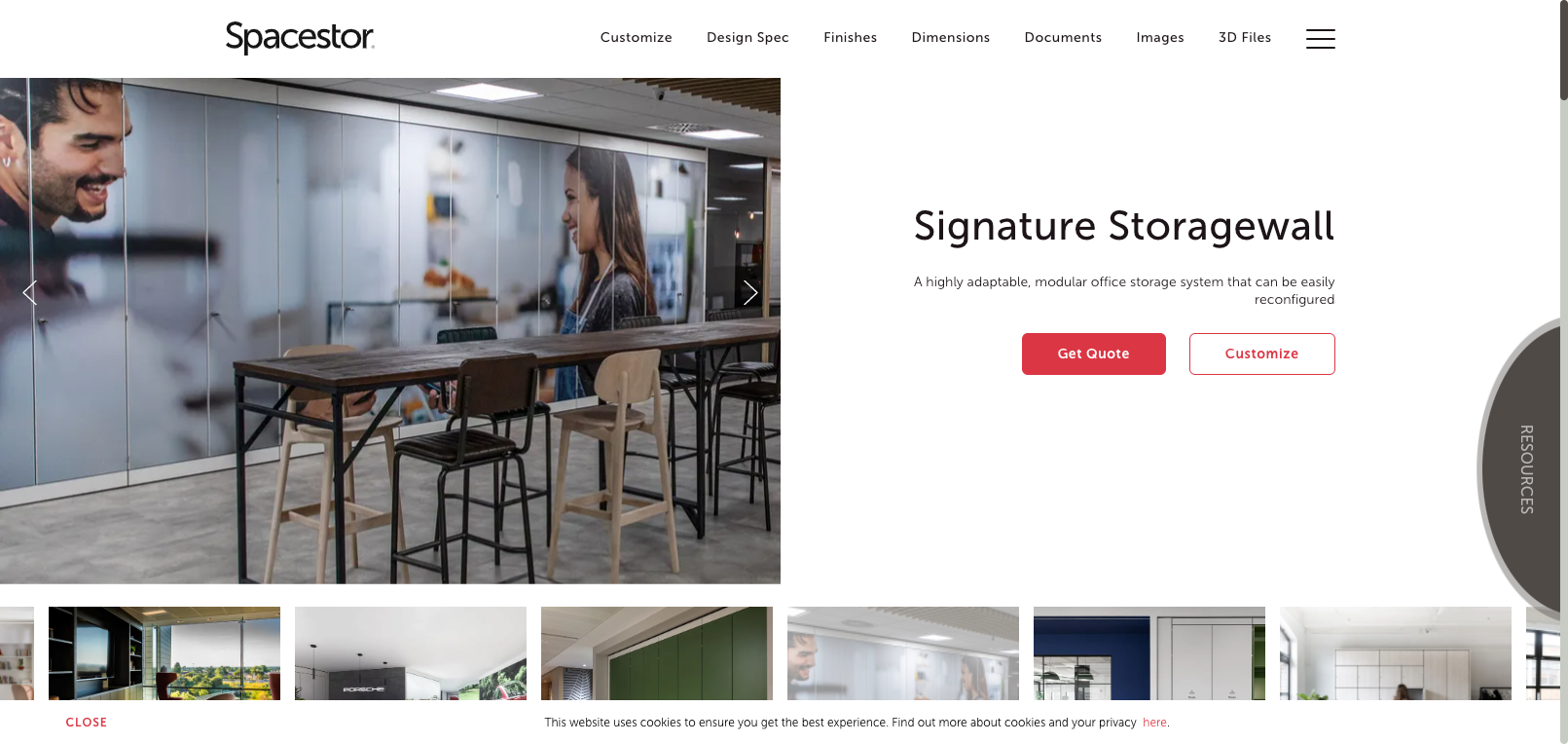 A direct-to-consumer (DTC) approach makes this kind of thing easier. The reason is you design and manufacture products yourself based on customers’ precise needs and desires.
A direct-to-consumer (DTC) approach makes this kind of thing easier. The reason is you design and manufacture products yourself based on customers’ precise needs and desires.
8. Build a Community Around Your Brand
Brand communities are an underutilized retention strategy—yet they can be highly effective. Indeed, 66 percent of branded communities say the community has had a positive impact on retention, while 58 percent say their community has increased customer loyalty.
It’s easy to imagine how making customers feel deeply invested in your brand encourages them to stick around. But how do you build such a community?
One approach is to discuss your brand story. Over four-fifths of consumers prefer a brand’s values to align with their own, so it makes sense to explain how you got started and what you hope to achieve (beyond “making money”), just like Mojo does here:
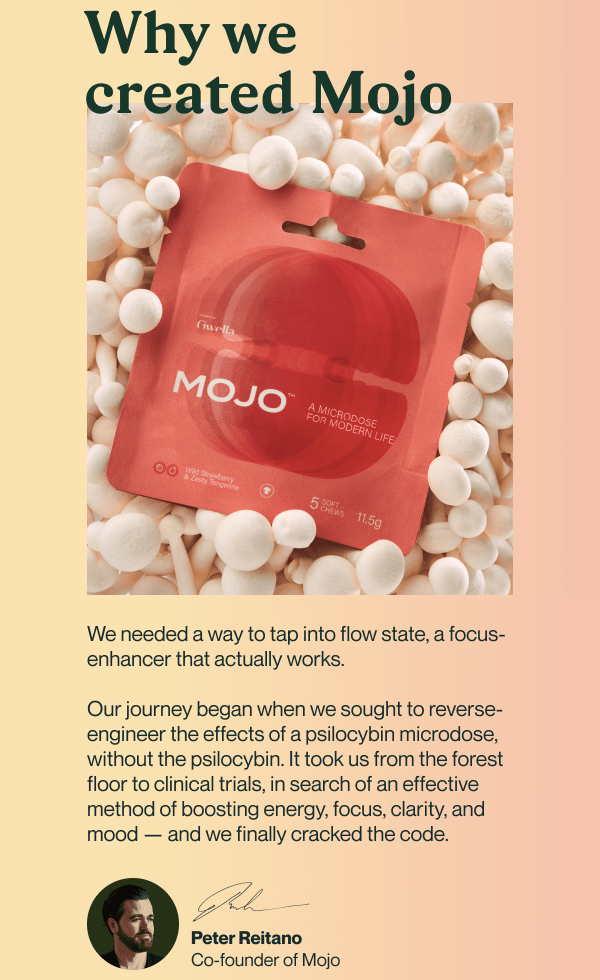
This email has greater credibility because it’s written by (or at least attributed to) the company’s co-founder. And it’s also actionable, because it incorporates a discount code for first-time buyers:
 That’s a perfect recipe for helping new customers feel bought into your brand—like they’re part of a community.
That’s a perfect recipe for helping new customers feel bought into your brand—like they’re part of a community.
9. Use Data to Better Understand Your Customers
According to Accenture, 91 percent of consumers are more likely to shop with brands that:
- Recognize them
- Remember them
- Provide them with relevant offers and recommendations
To do all that, you need to understand your customers by digging into the data. Look at their browsing behavior, the content and offers they’ve engaged with, and the products they’ve viewed (and purchased) to serve them with promotions and recommendations that perfectly match their preferences.
Accessories brand Bellroy gets it right by sharing curated product collections, incorporating a subject line that makes it clear these recommendations are personalized to the customer’s tastes:
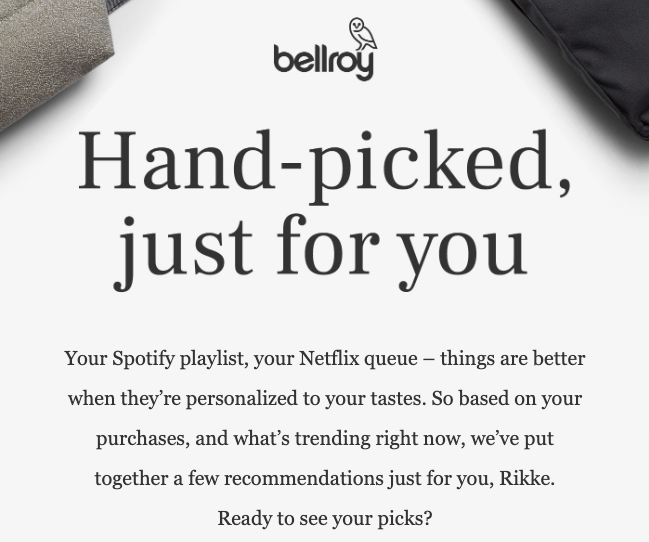 Even if you weren’t planning to make a purchase, there’s a good chance you’d explore the collection just to see what Bellroy has chosen for you.
Even if you weren’t planning to make a purchase, there’s a good chance you’d explore the collection just to see what Bellroy has chosen for you.
10. Create a Referral Program
I’ve got some bad news for marketers: just 38 percent of consumers trust ads as a source of brand or service information, while only 51 percent trust social media platforms.
So what do they trust? Friends and family.
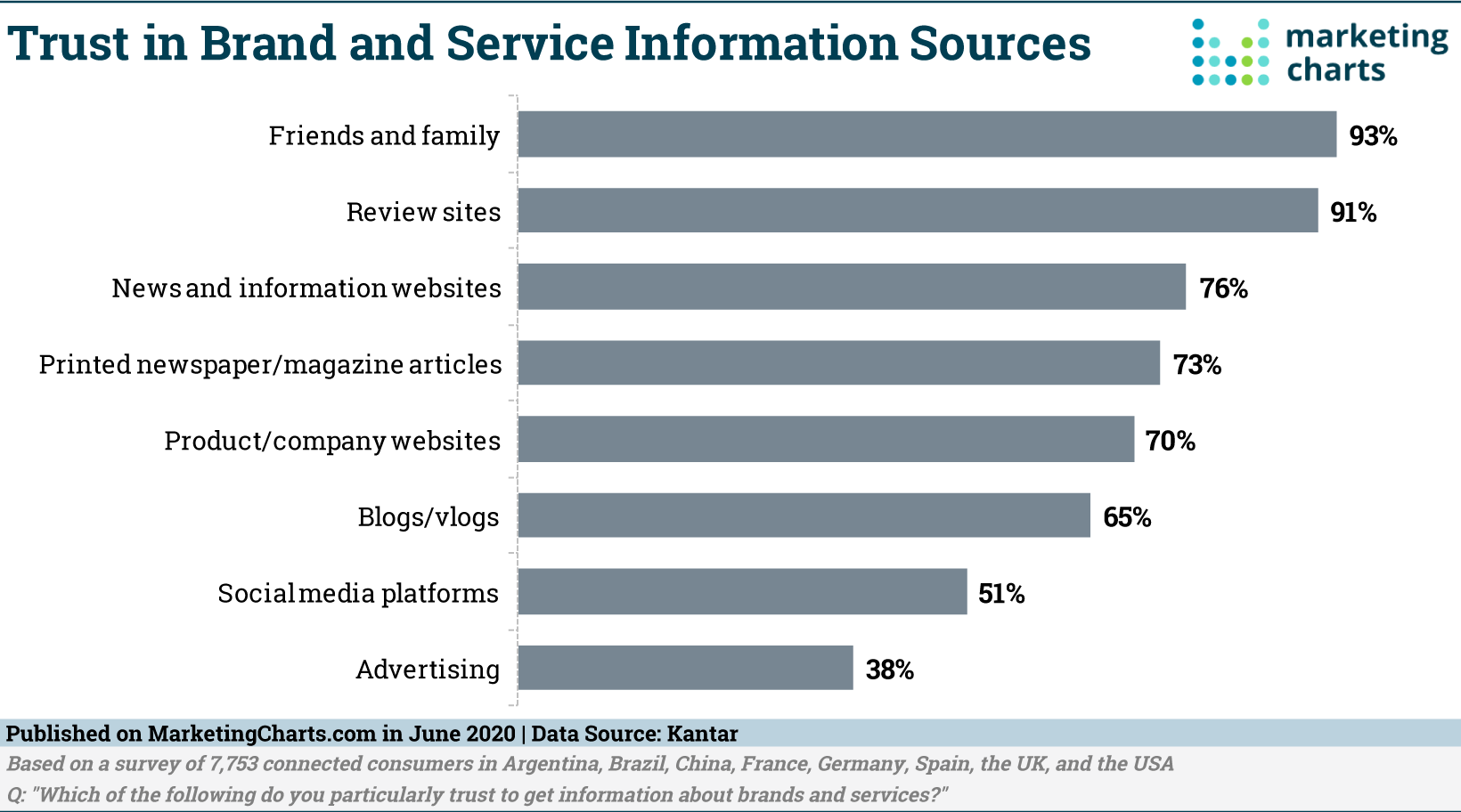 That’s right; word of mouth is seen as the most reliable source of information and recommendations. And one of the best ways to leverage it is to start a referral program.
That’s right; word of mouth is seen as the most reliable source of information and recommendations. And one of the best ways to leverage it is to start a referral program.
The idea behind referral marketing is pretty simple: you reward customers for recommending your products, typically by giving them a discount code to share with friends and family.
Yet many brands get it wrong by adding a bunch of complicated terms and conditions or forcing customers to jump through too many hoops.
Plus-size fashion brand Torrid nails it with this referral email:
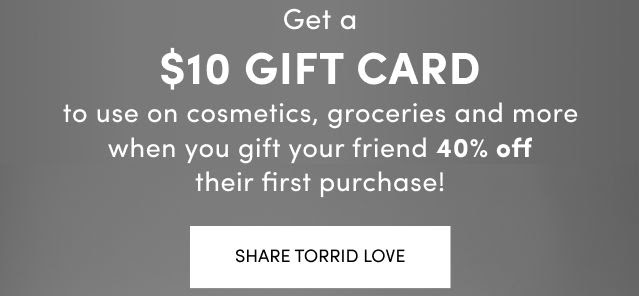 Not only do customers get the warm, fuzzy feeling of sharing a 40 percent discount, but they also receive a gift card for their troubles. That makes it well worth sharing the love.
Not only do customers get the warm, fuzzy feeling of sharing a 40 percent discount, but they also receive a gift card for their troubles. That makes it well worth sharing the love.
Retain More Customers With Drip
From sharing personalized product recommendations to analyzing the reasons why customers churn, many of the strategies in this article rely on building a detailed understanding of your audience.
Drip gives you the data and tools to make that happen.
Our segmentation tools bring together all your store, visitor, and marketing data, helping you group customers based on their behavior and how they engage with your content.
All of which helps you build stronger relationships with your best customers (and win over those who aren’t so convinced).
Find out for yourself by signing up for your 14-day free trial today!
